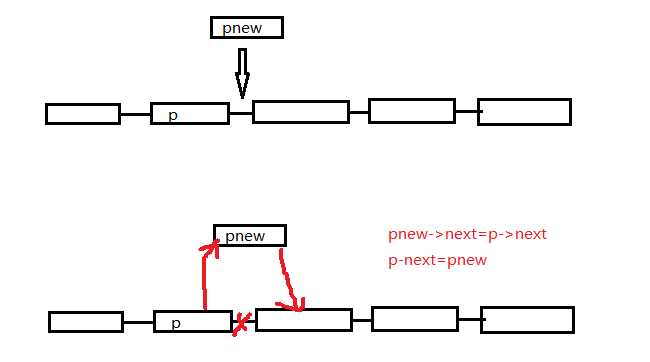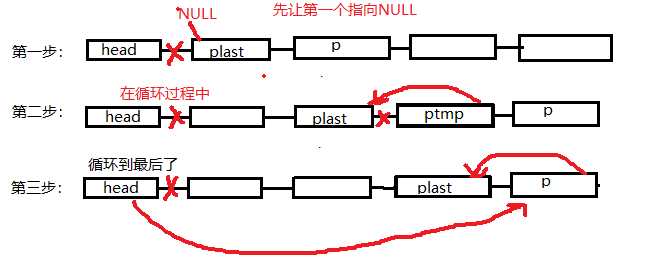數據結構算法——鏈表的各種操作
阿新 • • 發佈:2018-10-28
無法 input 叠代 error iostream list() tmp 博客 遇到
時隔已久,一直沒更新博客,感覺很愧疚呀。
先貼上所有的代碼。這個是用C++寫的
#include "stdafx.h" //Author:Albert //Date: 2018.10.28 #include<iostream> using namespace std; typedef int datatype; class Node { public: int data; Node *next; }; class linkList { public: linkList();//初始化一個單鏈表 ~linkList();//銷毀一個單鏈表 bool creatLinkListByInput(intn);//通過控制臺輸入新建一個長度為n的單鏈表 void dispLinkList();//把鏈表裏儲存的數據都顯示出來 int getLength(); void insertNodetoEnd(datatype data); void insertNode(datatype data, int n);//在第n個數據後插入一個數據data void DeleteNode(int n);//刪除第n個節點 void Reverse(); private: Node * head; }; linkList::linkList() { head= new Node; head->data = 0; head->next = NULL; } linkList::~linkList() { delete head; } bool linkList::creatLinkListByInput(int n) { Node *pnew, *ptemp; ptemp = head; if (n < 0) { cout << "error" << endl; return false; } for (int i = 0;i < n;i++) { pnew= new Node; cout << "請輸入第" << i + 1 << "個值:"; cin >> pnew->data; pnew->next = NULL; ptemp->next = pnew; ptemp = pnew; } return true; } void linkList::dispLinkList() { Node *p; p = head; if (p!=NULL) { while (p->next!=NULL) { p = p->next; cout << p->data << endl; } } else { cout << "這是一個空鏈表" << endl; } } int linkList::getLength() { int n=0; Node *p; p = head; while (p->next!=NULL) { n++; p = p->next; } return n; } void linkList::insertNodetoEnd(datatype data) { Node *pnew=new Node; pnew->data = data; pnew->next = NULL; Node *p=head; while (p->next != NULL) { p = p->next; } p->next = pnew; } void linkList::insertNode(datatype data, int n) { Node *p = head; Node *pnew = new Node; for (int i = 0;i < n;i++) { p = p->next; } //此時p指向的是第n個數據 pnew->data = data; pnew->next = p->next; p->next = pnew; } void linkList::DeleteNode(int n) { Node *p = head; Node *ppre = new Node; for (int i = 0;i < n;i++) { ppre = p; p = p->next; } //ppre是要刪除的節點的前一個節點 ppre->next = p->next; delete p; } void linkList::Reverse() { Node *plast = head->next; Node *p = plast->next; Node *ptmp = new Node; plast->next = NULL; while (p->next != NULL) { ptmp = p; p = p->next; ptmp->next = plast; plast= ptmp; } p->next = plast; head->next = p; } int main() { linkList a; //新建一個長度為3的單鏈表 a.creatLinkListByInput(3); a.dispLinkList(); cout << "鏈表長度為:" << a.getLength() << endl; cout << "在尾部插入一個1:" << endl; a.insertNodetoEnd(1); a.dispLinkList(); cout << "鏈表長度為:" << a.getLength() << endl; cout << "在第2個數據後插入1:" << endl; a.insertNode(1,2); a.dispLinkList(); cout << "鏈表長度為:" << a.getLength() << endl; cout << "刪除第4個數據" << endl; a.DeleteNode(4); a.dispLinkList(); cout << "鏈表長度為:" << a.getLength() << endl; cout << "將鏈表逆置" << endl; a.Reverse(); a.dispLinkList(); return 0; }
1、新建一個單鏈表
bool linkList::creatLinkListByInput(int n) { Node *pnew, *ptemp; ptemp = head; if (n < 0) { cout << "error" << endl; return false; } for (int i = 0;i < n;i++) { pnew = new Node; cout << "請輸入第" << i + 1 << "個值:"; cin >> pnew->data; pnew->next = NULL; ptemp->next = pnew; ptemp = pnew; } return true; }
這個代碼還是我看了別人的之後才寫的。在控制臺輸入一系列數據,返回是否新建成功。
其中最關鍵的一處就是定義一個head節點。這個節點不儲存數據,head->next才是第一個儲存的數據。
這樣的話就比較好寫循環裏的內容了,後面的調用也很方便。
用圖畫一下就很容易理解了。

顯示整個鏈表數據,得到鏈表長度什麽的,不用多說啦。直接遍歷就行。
2、插入節點。
void linkList::insertNode(datatype data, int n) { Node *p = head; Node *pnew = new Node; for (int i = 0;i < n;i++) { p = p->next; } //此時p指向的是第n個數據 pnew->data = data; pnew->next = p->next; p->next = pnew; }
先遍歷到到第n個節點
然後

3、刪除一個節點
void linkList::DeleteNode(int n) { Node *p = head; Node *ppre = new Node; for (int i = 0;i < n;i++) { ppre = p; p = p->next; } //ppre是要刪除的節點的前一個節點 ppre->next = p->next; delete p; }
把它畫出來就是

4、單鏈表的逆置
void linkList::Reverse() { Node *plast = head->next; Node *p = plast->next; Node *ptmp = new Node; plast->next = NULL; while (p->next != NULL) { ptmp = p; p = p->next; ptmp->next = plast; plast= ptmp; } p->next = plast; head->next = p; }

這裏ptmp的作用就是為了防止p->next=plast從而導致無法往下遍歷。
我見還有一種用ppre,p,pnex三個指針的。思想跟這個差不多。
感覺自己菜的要死,只能從頭再開始學啦。
還有幾個問題
鏈表中環的檢測:用的快慢指針的思想。
兩個有序鏈表的合並:遍歷,主要是別讓指針指亂了。
刪除鏈表倒數第n個節點。如果鏈表長度知道,就很簡單了,轉化為整數就好。如果長度不知道,我覺得,就用叠代可以有。
求鏈表中的中間節點,用快慢針呀。
這幾個問題我沒時間一個一個的寫啦。以後遇到了在一個一個的寫。
此外還有循環鏈表和雙向鏈表,他們都各有千秋,懂的單鏈表,這都很簡單了。
數據結構算法——鏈表的各種操作
